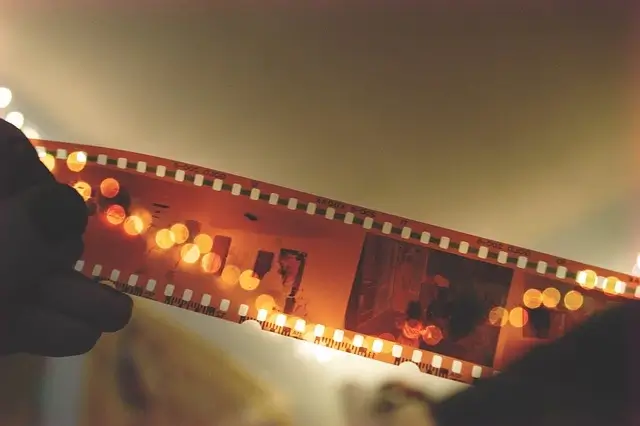History of Film The history of film dates back to the late 1800s when the first moving images were captured using devices like the zoetrope and the praxinoscope. By the early 1900s, filmmakers began experimenting with longer films and storytelling techniques, leading to the birth of narrative cinema.
Lets have a look through
Different Era of the Film Industry:
– The Silent Film Era (Late 1800s – Late 1920s)
‘The silent film era saw the rise of legendary filmmakers such as Charlie Chaplin, Buster Keaton, and D.W. Griffith. Without synchronized sound, silent films relied heavily on visual storytelling and music to convey emotion and meaning.
– The Introduction of Sound (Late 1920s – 1930s)
The late 1920s ushered in the era of “talkies,” revolutionizing filmmaking with synchronized sound. This allowed for more complex storytelling with dialogue and sound effects. Iconic films of this era include The Jazz Singer (1927), Gone with the Wind (1939), and The Wizard of Oz (1939).
– The Golden Age of Hollywood (1930s – 1950s)
This period marked the dominance of major studios such as MGM, Paramount, and Warner Bros. Genres like musicals, epics, and film noir gained popularity. Some of the most famous films from this era include Casablanca (1942) and Singin’ in the Rain (1952).
– New Cinematic Movements (1950s – 1960s)
The 1950s and 60s saw the emergence of new film movements like French New Wave and Italian Neorealism, which challenged traditional storytelling and emphasized realism. Influential filmmakers of this time include François Truffaut, Federico Fellini, and Akira Kurosawa.
– The Rise of Modern Filmmakers (1970s – 1980s)
The 1970s saw a new generation of filmmakers such as Martin Scorsese, Francis Ford Coppola, and Steven Spielberg pushing the boundaries of storytelling and special effects. This era gave rise to masterpieces like The Godfather (1972), Jaws (1975), and Star Wars (1977).
– The Blockbuster Era (1980s – 1990s)
The 1980s and 90s introduced the blockbuster era, where high-budget films became the norm. Action and sci-fi films gained immense popularity, with franchises like The Terminator (1984) and Die Hard (1988) dominating the industry.
– The Digital Revolution & Streaming Era (2000s – Present)
The 21st century saw rapid advancements in digital filmmaking and special effects. Streaming platforms like Netflix, Amazon Prime, and Disney+ have transformed how films are distributed and consumed, making independent films more accessible to global audiences.
An Overview of the Film Industry!
The film industry is a multi-billion-dollar global business that involves the production, distribution, and exhibition of films. It includes various professionals, such as producers, directors, writers, actors, cinematographers, and editors, all contributing to creating compelling stories.
Key Aspects of the Film Industry:
- Genres: Films span multiple genres, including drama, comedy, action, horror, and romance.
- Financing: Funding comes from studios, private investors, and government support.
- Distribution: Films are released in theaters, on streaming platforms, and through DVD/Blu-ray.
- Technology: Advances in CGI, digital cameras, and AI have transformed filmmaking.
- Impact of Streaming: Platforms like Netflix and Amazon have revolutionized the traditional distribution model, making films more accessible worldwide.
Despite evolving technologies and distribution models, storytelling remains at the heart of the film industry.
Interesting Film Facts!
- The first movie ever made was Roundhay Garden Scene (1888), lasting only 2.11 seconds.
- Avatar (2009) is the highest-grossing film of all time, earning over $2.8 billion worldwide.
- It Happened One Night (1934) was the first film to win the “Big Five” Academy Awards (Best Picture, Director, Actor, Actress, and Screenplay).
- Snow White and the Seven Dwarfs (1937) was the first feature-length animated film.
- Fresh Guacamole (2012) is the shortest film to be nominated for an Oscar, running just 1 minute and 40 seconds.
- Modern Times Forever (2011) is the longest film ever made, running for 240 hours (10 days).
- The MGM lion, seen at the beginning of many movies, first appeared in 1917.
- The Godzilla franchise holds the record for the most sequels, with 35 films as of 2021.
- Midnight Cowboy (1969) is the only X-rated film to win the Best Picture Oscar.
The history of film spans over a century, evolving from silent films to modern blockbusters and digital streaming. While technology continues to reshape the industry, the essence of filmmaking—storytelling—remains timeless. Whether through theatrical releases or digital platforms, films continue to captivate audiences, inspire generations, and reflect the cultural and emotional landscapes of their time.
So, whether you’re revisiting a classic or exploring the latest blockbuster, the magic of cinema is here to stay!

